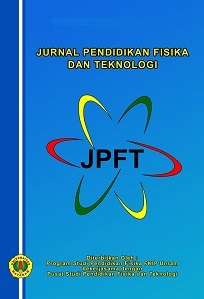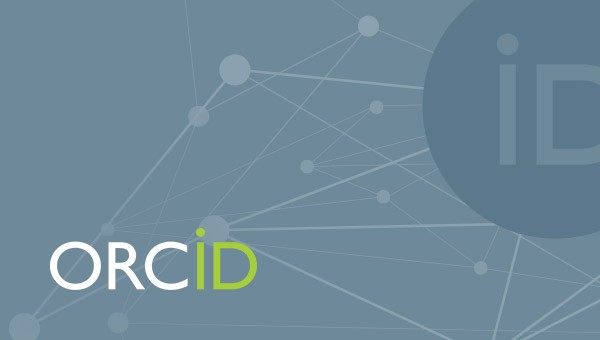Developing Multi-Frequency Bioelectrical Impedance Analysis for Fat-Free Mass Estimation in Early Childhood
DOI:
10.29303/jpft.v10i2.8228Published:
2024-12-31Issue:
Vol. 10 No. 2 (2024): July - DecemberKeywords:
Fat-free mass, Body Fat Percentage, Impedance, Body Composition, Regression AnalysisArticles
Downloads
How to Cite
Downloads
Metrics
Abstract
This study aims to develop and evaluate a Multi-Frequency Bioelectrical Impedance Analysis (MFBIA) system for estimating body composition, specifically Fat-Free Mass (FFM) and Body Fat Percentage (BF%). The primary objective was to assess the accuracy and reliability of the MFBIA system by comparing its measurements with those obtained from a commercially validated Smart Body Fat analyzer and traditional anthropometric methods. The research involved regression analysis to examine the correlation between FFM and BF% measurements from MFBIA and anthropometric data, including height and weight. Additionally, impedance measurements were taken at multiple frequencies (25 kHz, 50 kHz, and 100 kHz) to determine the system's ability to estimate body composition parameters across various conditions. The results showed a strong correlation between the FFM and BF% values derived from MFBIA and those obtained using the Smart Body Fat analyzer. The regression analysis indicated high linearity, with R² values ranging from 0.9439 to 0.9692, signifying the robustness of the system in predicting body composition. Furthermore, the MFBIA system demonstrated a high degree of consistency and accuracy in measuring FFM and BF%, with minimal deviations from the reference device. This research presents a multi-frequency BIA device designed specifically to measure fat-free mass (FFM), an important indicator for assessing the nutritional status of children. The results of this research offer a practical, affordable, and non-invasive tool for healthcare providers to assess body composition in children. The MFBIA system has the ability to track nutritional status, supporting targeted interventions to promote child health and prevent stunting.
References
Bärebring, L., Kværner, A. S., Skotnes, M., Henriksen, H. B., Skjetne, A. J., Henriksen, C., … Blomhoff, R. (2020). Use of bioelectrical impedance analysis to monitor changes in fat-free mass during recovery from colorectal cancer– a validation study. Clinical Nutrition ESPEN, 40, 201–207. https://doi.org/10.1016/j.clnesp.2020.09.021 DOI: https://doi.org/10.1016/j.clnesp.2020.09.021
Chabin, X., Taghli-Lamallem, O., Mulliez, A., Bordachar, P., Jean, F., Futier, E., … Eschalier, R. (2018). Bioimpedance analysis is safe in patients with implanted cardiac electronic devices. Clinical Nutrition, 1–6. https://doi.org/10.1016/j.clnu.2018.02.029 DOI: https://doi.org/10.1016/j.clnu.2018.02.029
Hermawan, D., Kurniasari, D., Sandayanti, V., Sari, N., & Listyaningsih, E. (2023). Relationships of deworming drug consumption and animal protein intake with stunting. Parasite Epidemiology and Control, 23(March). https://doi.org/10.1016/j.parepi.2023.e00326 DOI: https://doi.org/10.1016/j.parepi.2023.e00326
Iverson, B. L., & Dervan, P. B. (2022). Biochemical and anthropometric correlates of bio-electrical impedance parameters in severely malnourished children: A cross-sectional study Tsinuel, 7823–7830.
Khalil, S. F., Dali, N. S. M., Mohktar, M. S., & Ibrahim, F. (2014). Validation of multiple frequency bioimpedance analyzer using biological phantom. IECBES 2014, Conference Proceedings - 2014 IEEE Conference on Biomedical Engineering and Sciences: “Miri, Where Engineering in Medicine and Biology and Humanity Meet,” (January), 464–469. https://doi.org/10.1109/IECBES.2014.7047543 DOI: https://doi.org/10.1109/IECBES.2014.7047543
Lewis, J. I., Friis, H., Mupere, E., Wells, J. C., & Grenov, B. (2023). Calibration of Bioelectrical Impedance Analysis Against Deuterium Dilution for Body Composition Assessment in Stunted Ugandan Children. Journal of Nutrition, 153(2), 426–434. https://doi.org/10.1016/j.tjnut.2022.12.028 DOI: https://doi.org/10.1016/j.tjnut.2022.12.028
Palle, S. S., Møllehave, L. T., Taheri-Kadkhoda, Z., Johansen, S., Larsen, L., Hansen, J. W., … Andersen, J. R. (2016). Multi-frequency bioelectrical impedance analysis (BIA) compared to magnetic resonance imaging (MRI) for estimation of fat-free mass in colorectal cancer patients treated with chemotherapy. Clinical Nutrition ESPEN, 16, 8–15. https://doi.org/10.1016/j.clnesp.2016.09.003 DOI: https://doi.org/10.1016/j.clnesp.2016.09.003
Phillips, S. M., Bandini, L. G., Compton, D. V., Naumova, E. N., & Must, A. (2003). A longitudinal comparison of body composition by total body water and bioelectrical impedance in adolescent girls. Journal of Nutrition, 133(5), 1419–1425. https://doi.org/10.1093/jn/133.5.1419 DOI: https://doi.org/10.1093/jn/133.5.1419
Potter, A. W., Nindl, L. J., Soto, L. D., Pazmino, A., Looney, D. P., Tharion, W. J., … Friedl, K. E. (2022). High precision but systematic offset in a standing bioelectrical impedance analysis (BIA) compared with dual-energy X-ray absorptiometry (DXA). BMJ Nutrition, Prevention and Health, 5(2), 254–262. https://doi.org/10.1136/bmjnph-2022-000512 DOI: https://doi.org/10.1136/bmjnph-2022-000512
Quist, J. R., Rud, C. L., Brantlov, S., Ward, L. C., Mark, S., Baunwall, D., & Hvas, C. L. (2023). Bioelectrical impedance analysis as a clinical marker of health status in adult patients with benign gastrointestinal disease: a systematic review Josephine. Clinical Nutrition ESPEN. https://doi.org/10.1016/j.clnesp.2023.12.145 DOI: https://doi.org/10.1016/j.clnesp.2023.09.335
Riyadi, M. A., Nugraha, A., Santoso, M. B., Septaditya, D., & Prakoso, T. (2017). Development of Bio-impedance Analyzer (BIA) for Body Fat Calculation. IOP Conference Series: Materials Science and Engineering, 190(1). https://doi.org/10.1088/1757-899X/190/1/012018 DOI: https://doi.org/10.1088/1757-899X/190/1/012018
Salmi, J. A. (2014). Body composition assessment with segmental multifrequency bioimpedance Method. Journal of Sports Science and Medicine Wilderness & Environmental Medicine, 25(3), 352–353. https://doi.org/10.1016/j.wem.2014.06.007 DOI: https://doi.org/10.1016/j.wem.2014.06.007
Steinberg, A., Manlhiot, C., Li, P., Metivier, E., Pencharz, P. B., McCrindle, B. W., & Hamilton, J. K. (2019). Development and validation of bioelectrical impedance analysis equations in adolescents with severe obesity. Journal of Nutrition, 149(7), 1288–1293. https://doi.org/10.1093/jn/nxz063 DOI: https://doi.org/10.1093/jn/nxz063
Vaivada, T., Akseer, N., Akseer, S., Somaskandan, A., Stefopulos, M., & Bhutta, Z. A. (2020). Stunting in childhood: An overview of global burden, trends, determinants, and drivers of decline. American Journal of Clinical Nutrition, 112, 777S-791S. https://doi.org/10.1093/ajcn/nqaa159 DOI: https://doi.org/10.1093/ajcn/nqaa159
Yano, N., Iwashita, D., & Ohwatashi, A. (2022). The utility of bioelectrical impedance analysis to assess nutritional status of patients with severe motor and intellectual disabilities. Clinical Nutrition ESPEN, 50, 191–195. https://doi.org/10.1016/j.clnesp.2022.05.018 DOI: https://doi.org/10.1016/j.clnesp.2022.05.018
Yeh, C., Chen, Y. J., Lai, L. Y., Jang, T. R., Chiang, J., Chen, Y. Y., & Hsieh, K. C. (2012). Bioelectrical impedance analysis in a mathematical model for estimating fat-free mass in multiple segments in elderly Taiwanese males. International Journal of Gerontology, 6(4), 273–277. https://doi.org/10.1016/j.ijge.2012.01.031 DOI: https://doi.org/10.1016/j.ijge.2012.01.031
Author Biographies
Herenda Sela Wismaya, Universitas PGRI Yogyakarta
Wahyu Sugianto, Universitas PGRI Yogyakarta
Rida Dwi Hanifah, Universitas PGRI Yogyakarta
License
Copyright (c) 2024 Herenda Sela Wismaya, Wahyu Sugianto, Rida Dwi Hanifah

This work is licensed under a Creative Commons Attribution-ShareAlike 4.0 International License.
Authors who publish with Jurnal Pendidikan Fisika dan Teknologi (JPFT) agree to the following terms:
- Authors retain copyright and grant the journal right of first publication with the work simultaneously licensed under a Creative Commons Attribution License 4.0 International License (CC-BY-SA License). This license allows authors to use all articles, data sets, graphics, and appendices in data mining applications, search engines, web sites, blogs, and other platforms by providing an appropriate reference. The journal allows the author(s) to hold the copyright without restrictions and will retain publishing rights without restrictions.
- Authors are able to enter into separate, additional contractual arrangements for the non-exclusive distribution of the journal's published version of the work (e.g., post it to an institutional repository or publish it in a book), with an acknowledgement of its initial publication in Jurnal Pendidikan Fisika dan Teknologi (JPFT).
- Authors are permitted and encouraged to post their work online (e.g., in institutional repositories or on their website) prior to and during the submission process, as it can lead to productive exchanges, as well as earlier and greater citation of published work (See The Effect of Open Access).











